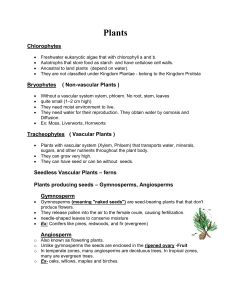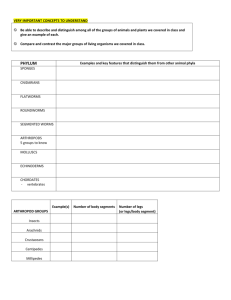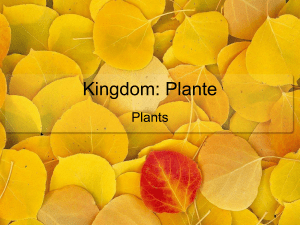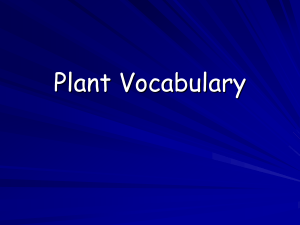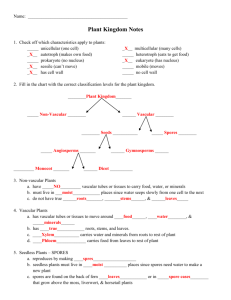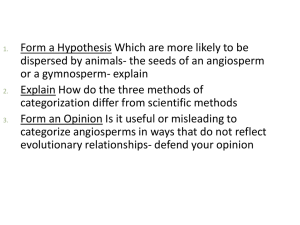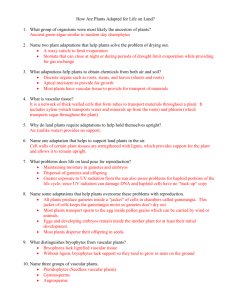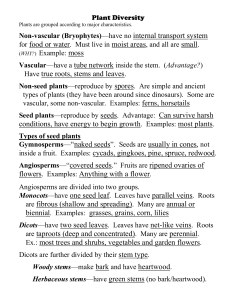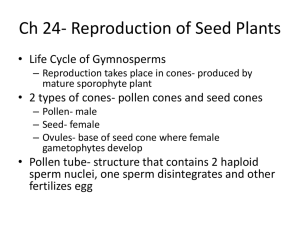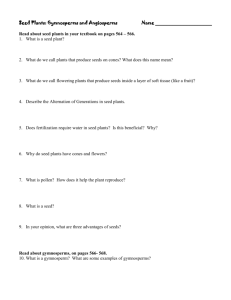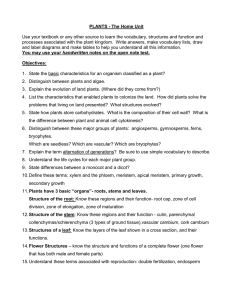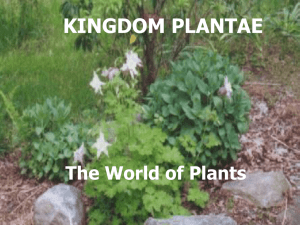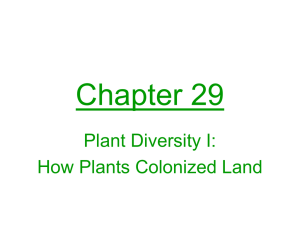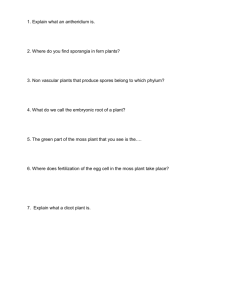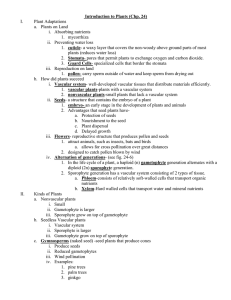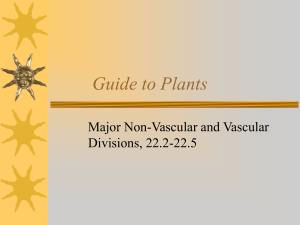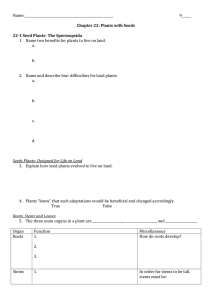Plant study Guide 20.1 What is the function of a cuticle? What is the
advertisement
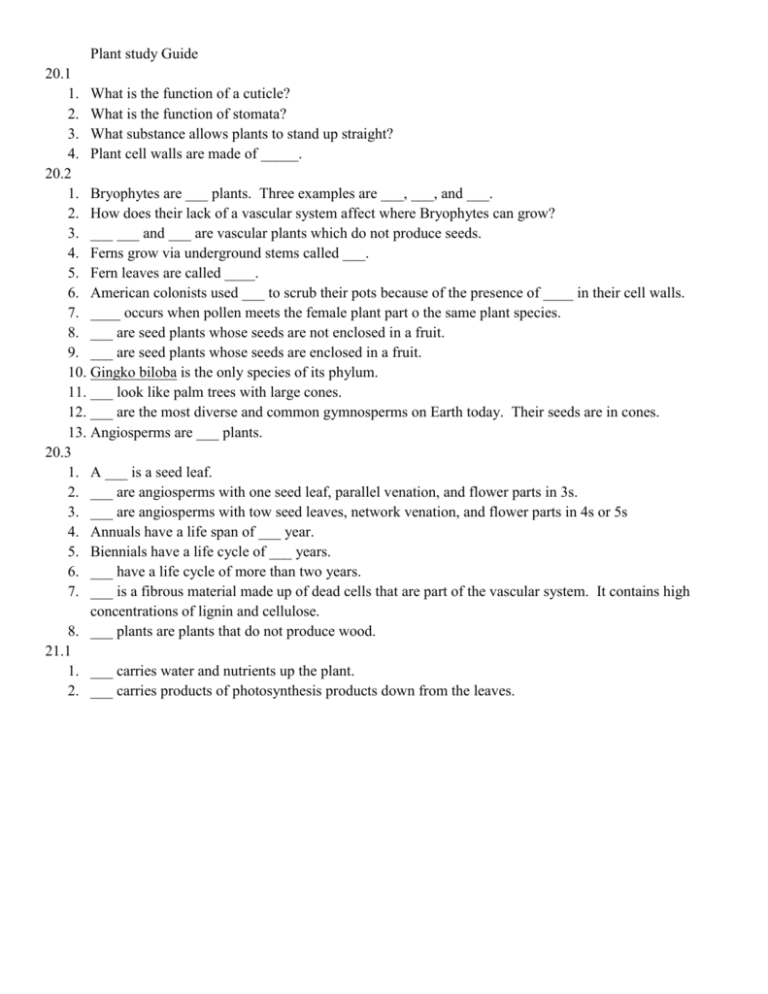
Plant study Guide 20.1 1. What is the function of a cuticle? 2. What is the function of stomata? 3. What substance allows plants to stand up straight? 4. Plant cell walls are made of _____. 20.2 1. Bryophytes are ___ plants. Three examples are ___, ___, and ___. 2. How does their lack of a vascular system affect where Bryophytes can grow? 3. ___ ___ and ___ are vascular plants which do not produce seeds. 4. Ferns grow via underground stems called ___. 5. Fern leaves are called ____. 6. American colonists used ___ to scrub their pots because of the presence of ____ in their cell walls. 7. ____ occurs when pollen meets the female plant part o the same plant species. 8. ___ are seed plants whose seeds are not enclosed in a fruit. 9. ___ are seed plants whose seeds are enclosed in a fruit. 10. Gingko biloba is the only species of its phylum. 11. ___ look like palm trees with large cones. 12. ___ are the most diverse and common gymnosperms on Earth today. Their seeds are in cones. 13. Angiosperms are ___ plants. 20.3 1. A ___ is a seed leaf. 2. ___ are angiosperms with one seed leaf, parallel venation, and flower parts in 3s. 3. ___ are angiosperms with tow seed leaves, network venation, and flower parts in 4s or 5s 4. Annuals have a life span of ___ year. 5. Biennials have a life cycle of ___ years. 6. ___ have a life cycle of more than two years. 7. ___ is a fibrous material made up of dead cells that are part of the vascular system. It contains high concentrations of lignin and cellulose. 8. ___ plants are plants that do not produce wood. 21.1 1. ___ carries water and nutrients up the plant. 2. ___ carries products of photosynthesis products down from the leaves.
